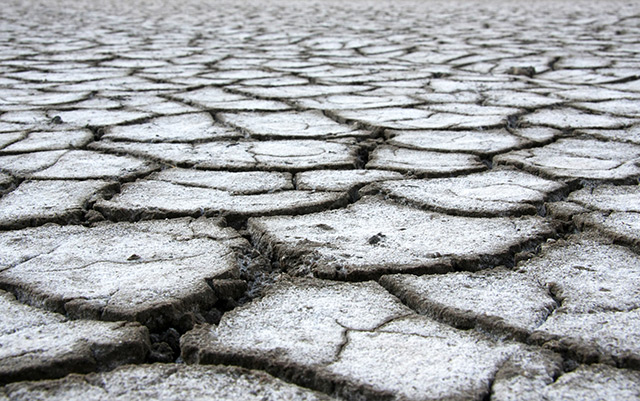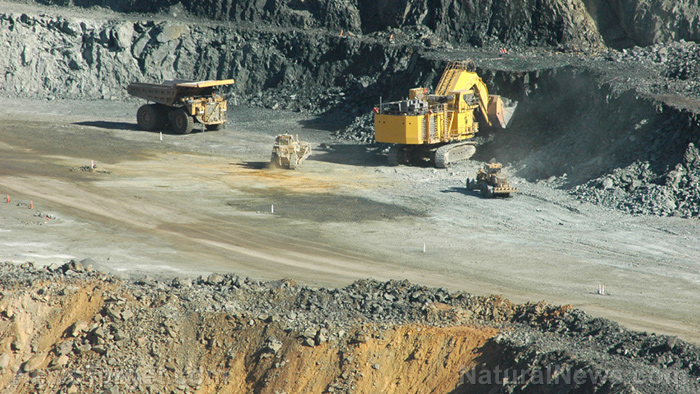India’s Ganges River is drying up slowly but surely, and reckless human activity is to blame
09/26/2025 / By Lance D Johnson

The Ganges has flowed for millennia, a ribbon of life weaving through the heart of South Asia, nourishing civilizations, cradling faith, and feeding half a billion souls. But now, this ancient river—worshipped as a goddess, relied upon as a lifeline—is fading before our eyes. A new study reveals that the Ganges is drying at a rate unseen in 1,300 years, its waters retreating under the weight of human ambition, industrial greed, and the slow suffocation of a monsoon once as reliable as the sunrise. The crisis isn’t just about a river running low; it’s about a civilization standing on the edge of thirst, with climate models blind to the storm we’ve already unleashed.
Scientists from IIT Gandhinagar and the University of Arizona have pieced together the river’s history like detectives, reading the rings of ancient trees and decoding the whispers of long-forgotten droughts. Their verdict? The Ganges is in its death throes—and we are the executioners. The drying since 1991 isn’t just severe; it’s unprecedented, a 76% plunge deeper than the worst drought of the 16th century, when empires crumbled under the weight of famine. This time, the culprit isn’t fate or the whims of nature. It’s us.
Key points:
- The Ganges River is experiencing its worst drying period in 1,300 years, with current conditions 76% more severe than the previous record drought in the 1500s.
- Human activity—not natural cycles—is the primary driver, with air pollution, ocean warming, and weakened monsoons starving the river of life-giving rains.
- Climate models failed to predict this collapse, exposing a dangerous blind spot in how we understand—and mismanage—our water future.
- Without urgent action, 600 million people face water scarcity, collapsed agriculture, and ecological disaster in a region already stretched to its limits.
- Solutions demand better science, smarter water policies, and a reckoning with the industrial forces choking the monsoon’s breath.
The forces behind Ganges River downfall
The Ganges isn’t just a river; it’s a pulse. For centuries, its annual floodwaters have swollen with the summer monsoon, a divine rhythm that farmers, priests, and poets alike have trusted as the very heartbeat of India. But that rhythm is faltering. The study, published in Proceedings of the National Academy of Sciences, reveals that the monsoon rains feeding the Ganges have weakened dramatically since the 1990s—a decline so sharp it defies the last 13 centuries of natural variation.
The researchers didn’t stop at modern records. They reached into the past, using the Monsoon Asia Drought Atlas (MADA), a trove of tree-ring data that stretches back to the year 700. Like the growth rings of a tree, these natural archives hold the memory of every drought, every deluge. When the team layered this ancient data over modern hydrological models, the pattern was undeniable: the Ganges is drying faster than ever before, and human fingerprints are all over the crime scene.
First, rainfall depends on the temperature difference between land and sea. When the ocean heats up, that difference shrinks, and the monsoon winds grow lazy, delivering less rain to the thirsty plains below.
Then there’s the smog. India’s skies are choked with anthropogenic aerosols—tiny particles from factories, cars, and coal plants that hang in the air like a dirty film. These pollutants don’t just poison lungs; they block sunlight, cooling the land surface just enough to disrupt the monsoon’s delicate balance. The result? Less rain, weaker rivers, and a land parched by progress.
The tragedy? We saw none of this coming. The study’s authors point out that most global climate models—those crystal balls scientists use to predict our future—failed to capture this drying trend. They expected warming to increase monsoon rains, not strangle them. But reality has outpaced the models, leaving us blind to a crisis that’s already here.
When the river dies, what happens to the people?
The Ganges isn’t just water. It’s food, faith, and survival for 600 million people. Its banks feed 40% of India’s population, its waters irrigate the wheat and rice fields that keep hunger at bay. When the river runs low, the consequences aren’t abstract—they’re immediate and brutal.
Already, the signs are everywhere:
- Farmers in Uttar Pradesh watch their crops wither as groundwater tables plummet.
- Delhi’s taps run dry as reservoirs shrink, sparking water wars between states.
- The Sundarbans, the world’s largest mangrove forest, is salt-poisoned as seawater creeps upstream, killing the delicate balance of fresh and brine.
- Religious pilgrims, who once bathed in the Ganges to wash away sins, now wade through toxic foam and industrial sludge, the river’s sacred waters turned to sewage.
The study’s authors warn that without radical changes in water management, the region faces catastrophic scarcity. But what does that even look like? Dams and diversions won’t save a river that’s no longer being refilled. The real solution lies in two battles: one against the pollution choking the monsoon, and another against the centralized control of water that’s left communities powerless for decades.
Historically, India’s water wisdom was local and decentralized. Stepwells, rainwater harvesting, and crop rotations kept villages resilient even in dry years. But colonial rule—and later, post-independence industrialization—replaced tradition with exploitation. Rivers were dammed, forests cleared, and groundwater pumped to the brink. Now, as the monsoon falters, those old systems of resilience are more vital than ever.
The researchers offer two glimmers of hope—if we act now.
First, fix the models. The fact that climate science missed this crisis exposes a dangerous flaw in how we predict our future. Most models assume that a warmer world means wetter monsoons, but the Ganges tells a different story. The study urges scientists to dig deeper into the interplay between aerosols, ocean temperatures, and rainfall—because if we don’t understand the problem, we can’t solve it.
Second, rethink water. The Ganges doesn’t just need more dams or deeper wells; it needs a revolution in how we live with it. That means:
- Reviving traditional water systems—restoring stepwells, ponds, and floodplain farming that worked for centuries.
- Slashing pollution—not with carbon taxes that impoverish the poor, but by holding industries accountable for the smog and chemicals they dump into the air and water.
- Decentralizing power—giving communities control over their water, instead of leaving them at the mercy of corrupt bureaucrats and corporate water barons.
- Preparing for the worst—because even if the monsoon recovers, the next drought could be the one that breaks the camel’s back.
The Ganges is more than a river. It’s a testament to what happens when humanity forgets its place in the natural order. We didn’t just take from it—we assumed it would never run dry. Now, as the waters recede, we’re left with a choice: Do we double down on the same systems that brought us here, or do we wake up?
Sources include:
Submit a correction >>
Tagged Under:
aerosol impact, agricultural collapse, climate models, corporate control, decentralized water, drought history, environmental justice, faith and ecology, Ganges crisis, globalist agenda, Indian ocean, industrial smog, local resilience, monsoon collapse, river drying, sacred rivers, survival strategies, traditional farming, water sovereignty, Water Wars
This article may contain statements that reflect the opinion of the author
RECENT NEWS & ARTICLES
COPYRIGHT © 2017 DISCOVERIES NEWS




















